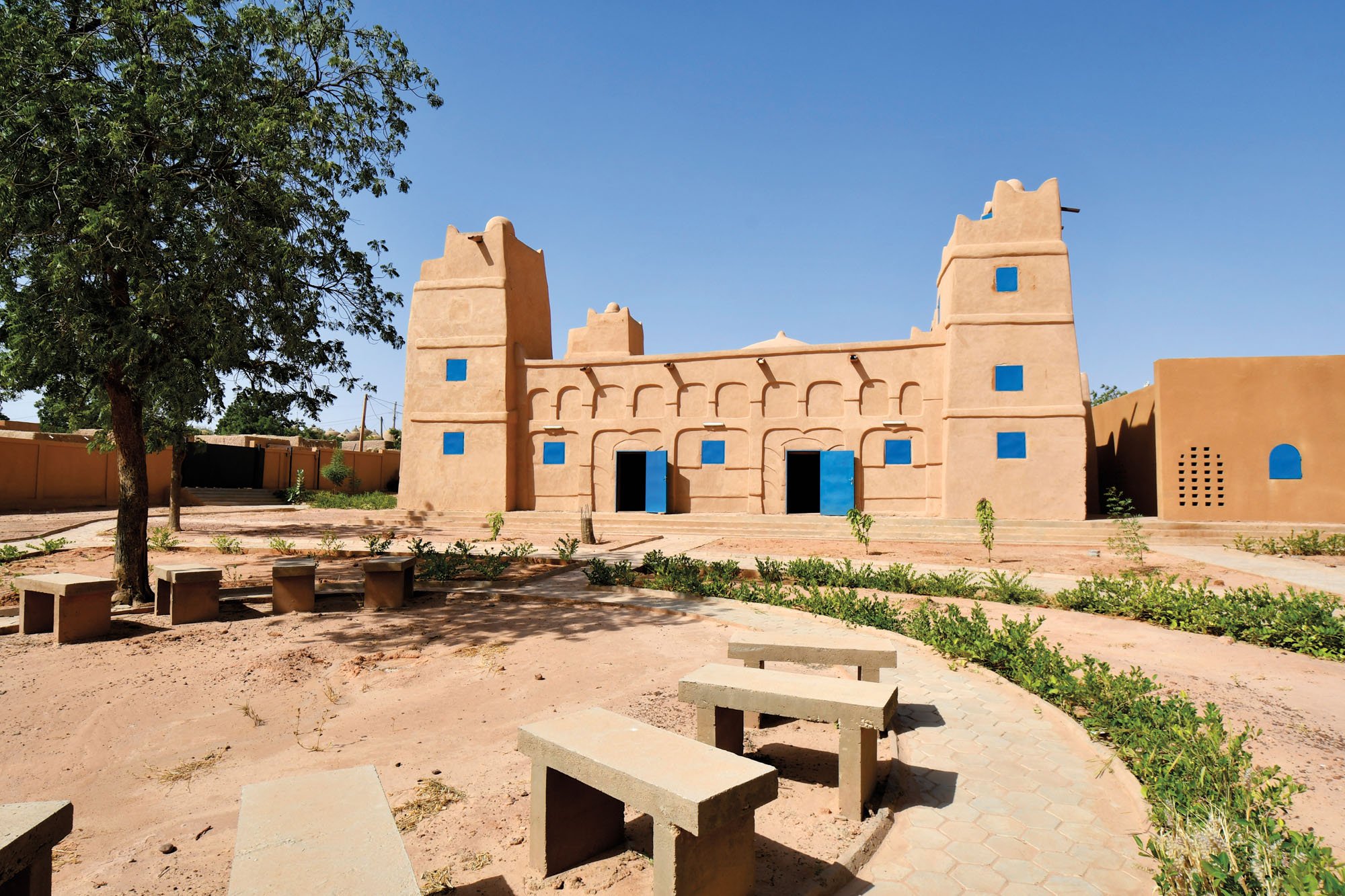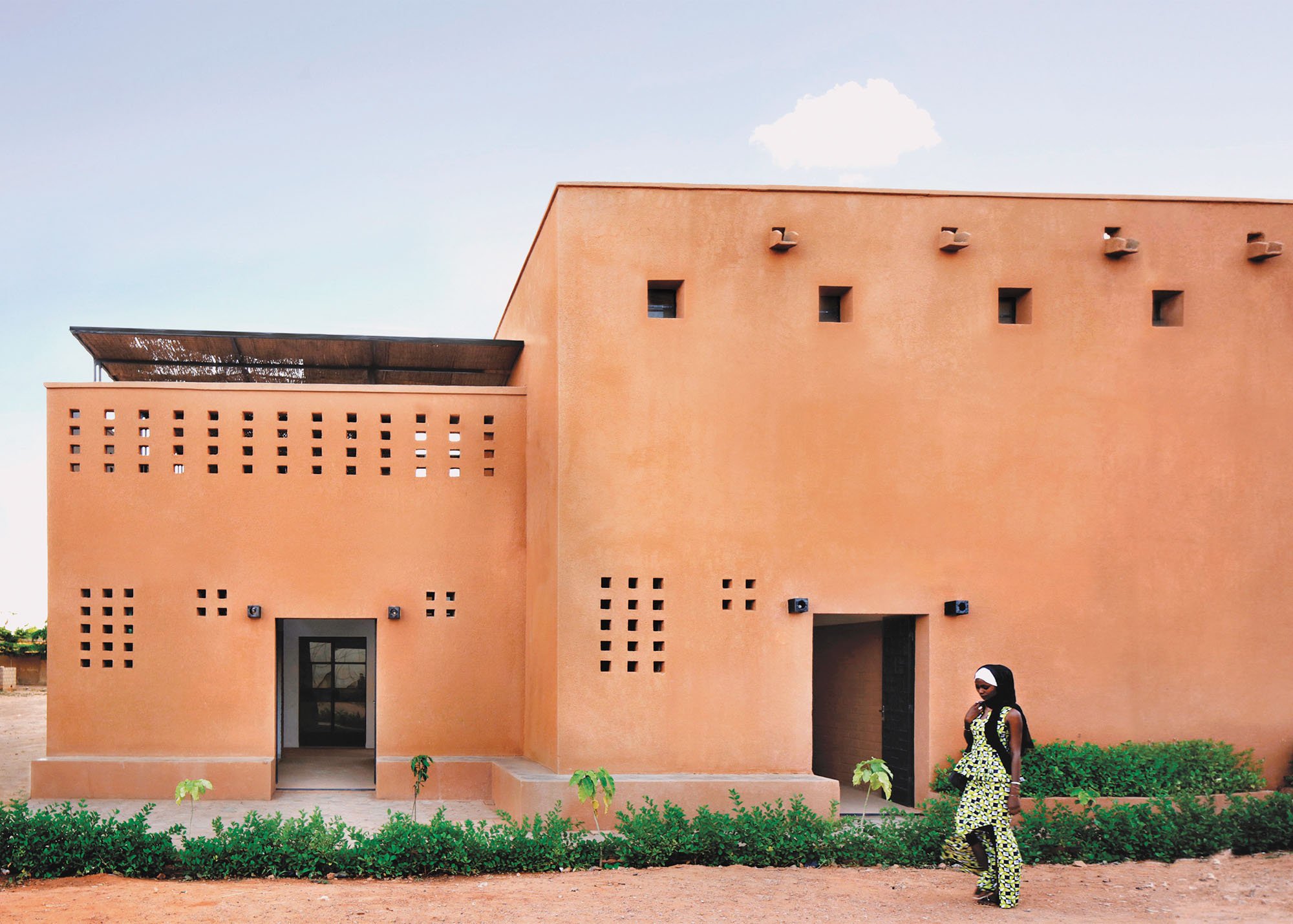Interview by Kelly Beamon, Metropolis Mag | Originally published 27.04.2022
Architect Mariam Kamara—founder of Niamey, Niger-based firm Atelier Masōmī—is a contrarian of design pedagogy as it is largely practiced today. To Kamara, modern is not synonymous with European forms, architecture is not only for Westerners to define, and the so-called canon of great buildings actually ignores most of the built world.
“There’s a perception that we—80 percent of the planet—are just receptacles for Europeans’ and Americans’ grand visions,” says Kamara, who in recent years has won several international honors, including two LaFargeHolcim Awards for her firm’s Hikma Community Complex (designed together with Studio Chahar) and a Prince Claus Award for outstanding achievements in the fields of culture and development. “This lopsided way” of studying architecture, she adds, must change.
To help correct it, last fall she created a ten-student studio at Harvard’s Graduate School of Design (GSD) called “Designing for the DNA of a Place,” to teach a groundbreaking process for visualizing architecture in places where you happen to be an outsider. The very existence of this course may signal a tidal shift, due partly to its Ivy League home and partly to Kamara’s rapidly expanding influence. “We focus so much on the built result. I wanted these students to focus on process, ethics, and the implications of our work,” she says.
To expose students to the inequities of the architectural canon, Kamara asked them to design speculative projects for a Boston-area site, informed by the region’s Indigenous influences. A key challenge, she points out, is that Indigenous precedents—which she describes as being part of North America’s DNA—are often missing or inaccessible because a colonial value system encourages students to ignore them. Students spent weeks working through this kind of intense research, which Kamara uses in her own projects. The assignment was meant to widen students’ references and teach avoidance of the usual models, which represent a singular colonial point of view.
Kamara contends that the reading list to support this new approach has yet to be written, but her curriculum does fit with a growing school of thought—and with direct calls to action—to decolonize architectural education and the archives that sustain it.
Mabel O. Wilson, Columbia Graduate School of Architecture, Planning and Preservation (GSAPP) professor, for example, took on the Museum of Modern Art in New York City for defining and canonizing Modern architecture to the exclusion of Black architects in “White by Design,” an essay she contributed to the 2019 volume Among Others: Blackness at MoMA by Charlotte Barat and Darby English. “Modern architecture builds the world for the white subject, maintaining the logics of racism while also imagining a future world in which nonwhite subjects remain exploitable and marginal,” Wilson wrote in that essay. “The power of the architecture and its archive is to produce ‘whiteness’ by design.” MoMA’s architecture and design department finally acquired its first work by a Black designer (Charles Harrison) in 2016.

Likewise, Neal Shasore, head of school and chief executive officer for the London School of Architecture, has spoken out in favor of decolonizing the study of architecture. The editor of the Parisian magazine The Funambulist, Léopold Lambert, recently said, “No other discipline is better at implementing settler colonialism.” And a group of faculty and students at Keele University in the U.K. published an 11-point “Manifesto for Decolonising the Curriculum” in 2018.
Kamara says the idea to offer her critique in the form of a studio at one of the world’s most prestigious training grounds for architects came to her gradually, like her own professional growth. Memories of her childhood spent partly in the Sahara, an hour’s drive from a 15th-century town distinguished by the indelible profile of its earthen adobe architecture, served as an antidote to her own feelings of alienation when she realized how little teaching time was being devoted to the history of places other than Europe. “Studying in the U.S., I was constantly being asked to unlearn what I knew to be true,” says Kamara, who earned her MArch in 2013 from the University of Washington College of Built Environments.

After graduating, she launched her firm in 2014. Her stint as David Adjaye’s mentee in the 2018-2019 Rolex Mentor and Protégé Arts Initiative provided additional exposure. A recent announcement that she is part of a team handling high-profile commissions for Liverpool’s Canning Dock that includes Adjaye, U.K. architect Asif Khan, and American artist
Theaster Gates has expanded her business. She expects her staff, which has grown from four people to 12 in the past year, to double again. Meanwhile, she plans to open a new office in New York to handle furniture design, competitions, and other work. Projects on the boards include sites in Senegal, Liberia, Ghana, and the Middle East. “We’re in a lot of invited competitions, which was not the case before,” she says.
Increasingly working outside her comfort zone of Niger prompted Kamara to query what kind of design might be appropriate and ethical for an outsider to propose. “What is my place here?” she asks. America is a perfect place to start teaching that process because it’s the “perfect colonial project,” she says.
Kamara’s new scholarship is also on tour: She has embarked on a series of lectures hosted by MIT, Columbia University GSAPP, the African Futures Institute in Ghana, and Harvard GSD, each time addressing glaring omissions in things like the foundational timeline of milestones in ancient Africa versus Europe.
“That [view] dismisses the rest of the world as faraway places that have only sometimes provided us with beautiful but primitive structures, while Western buildings are the ones worthy of true regard,” Kamara says. “Suddenly, we can’t imagine designing without concrete, wood, glass, or steel. Yet these are far from being universally used around the world.”
There are few better ways to indoctrinate the new generation of architects than to inject this critical mindset into the curriculum of an Ivy League university that serves as a main artery of the profession, infusing it with newly minted practitioners from all over the globe.
“This was one of the few courses they were offering that centered on the idea of architecture playing a role in deep social issues that are happening today,” says one of Kamara’s students, Kathlyn Kao.
“It talked about this unique research methodology, which I hadn’t encountered before,” says another GSD student, Thomas Kuei, recalling why he decided to register for the class. “We had to stay aware that the data we looked at wasn’t depicting the actual history of a space. . . because it was written by non-native people. We’d read multiple accounts of the same history to make our own [conclusions] about what an accurate history could be.”